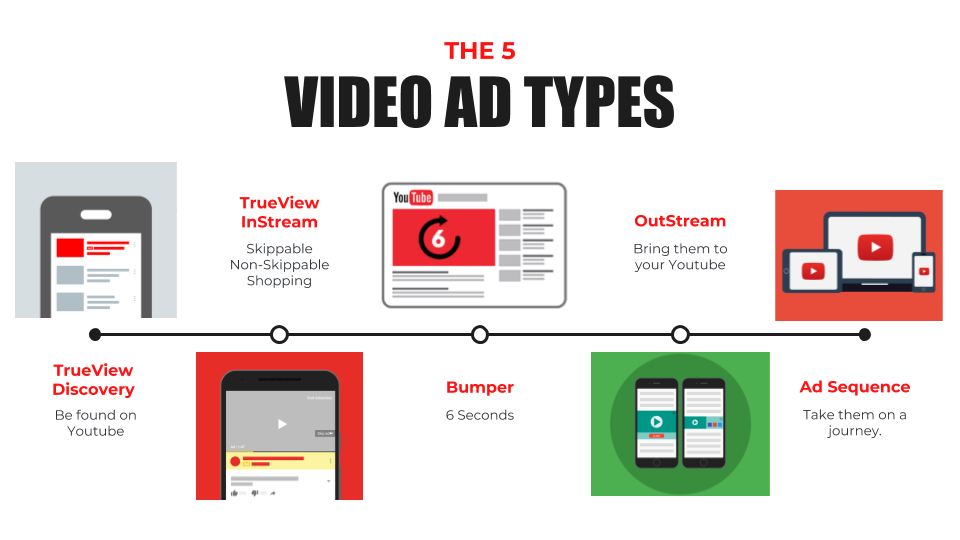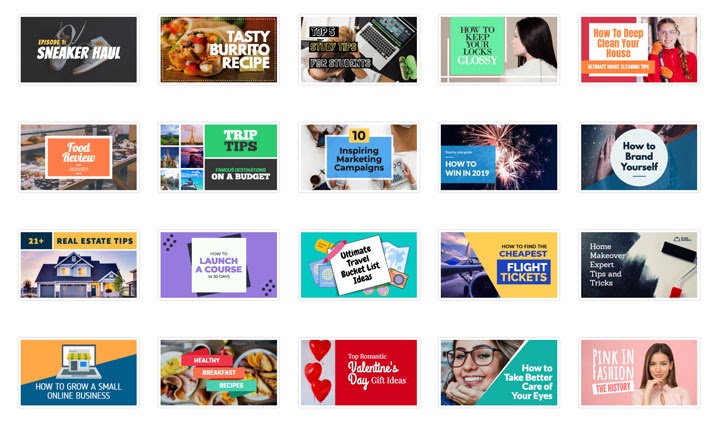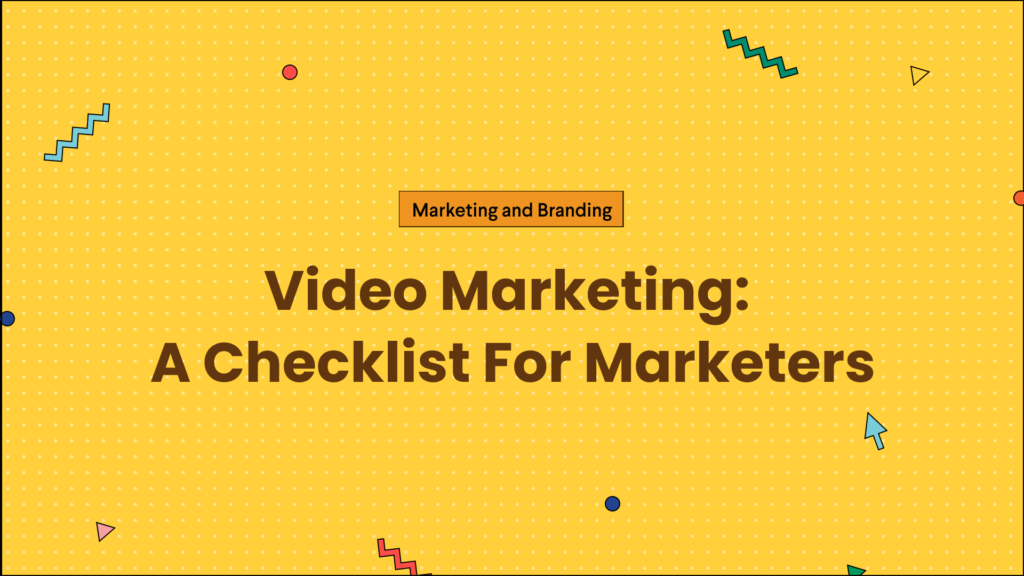Chances are that if you’re looking to advertise through videos, you want to attract the kind of audience that’ll actively engage with your content. More importantly, you’d want them to buy from you as well eventually. But you might be wondering, how can I achieve this, especially with video marketing?
You’d be surprised to know that video marketing constitutes a lot more than just creating quality material and uploading it. Without proper planning and direction, you can end up with marketing campaigns that lead to a loss. But this can be avoided. All it takes is educating yourself about the right steps to take for video marketing.
To make things easier, we have created a simple 10-step checklist designed to help marketers like you get a sense of direction. You can use this list as a starting point for launching a successful video marketing campaign!
Table of Contents
1. Pen Down Your Purpose
We know that this is no news. But as marketers, we can often end up losing our way in the middle of our campaigns. So, the importance of having an end goal is fundamental. And only having it in your head isn’t enough.
The first step to take is to write down your purpose. Once you have an idea in your mind, it’s crucial to crystallize it in the form of tangible, solid content that you can refer to if you ever lose your way.
So, ask yourself, what are you trying to achieve with your videos? Who do you want to attract? Why do you want to attract them? And what do you want them to do for you?
The thing is that before you get into the technicalities of video marketing, it’s more important to determine what your aim is and how it ties into your marketing goals. For example, if you want to attract potential students to an online coaching class you’re offering, your video’s purpose could be to show the value that people can expect to gain from you and your exciting course material.
2. Figure Out the CTAS
Okay, so now that you know what to film, the next step on our checklist is to figure out what action you want viewers to take after watching. Should they visit your website for more information? Or perhaps sign up for weekly emails? Request a free consultation? Download a coupon?
Every marketing video should always, without fail, have a call-to-action (or CTA) in it. And the kind of CTA you use can vary according to your business, your ad’s purpose, and where this content fits within your buyer’s journey. So, for example, if you want to target a potential buyer who’s still in the finding-out-information phase, then your CTA could be to download a free E-book containing that information.

3. Choose Your Format
Once we’ve gotten all that figured out, it’s time to get to the creation process. But before that, you must decide on a format. Whether it’s short-form video, animation, scripts, or live content, the point is to pre-determine how you want to communicate with your audience.
Not only will this make your job easier, but it’ll also help any other people involved in the process (such as videographers, editors, or developers) genuinely understand what you’re visualizing.

So, choose your video format and align this with the kind of business you have. For example, if you’re a skincare brand, then the format you may want to choose could be a long-form video of real humans using your products and the final results. But if you’re a graphic design agency, then perhaps you want to invest in some high-quality animation to show people just what you’re capable of!
4. Invest in Video Creation & Video Editing
Let’s get one thing straight. In the over-saturated world of video content today, mediocre-quality material just isn’t going to work. So, you might want to consider investing in your video creation and editing process. Whether that means buying professional camera equipment for yourself to use or hiring external help to edit your content, a little investment can go a long way.
Remember that once you create this content, you’ll likely use it for a long time. So, it’s worth the investment. Moreover, the material you put out there will show viewers what your brand is all about. It’ll be their first glimpse into what your business looks like. So, if you put forth low-quality content, it’s not going to make a good impression.
People are generally more likely to engage with glossy, aesthetic material instead of a video with bad lighting and poor sound. That’s just the reality of the content world these days, and as marketers, we need to keep this in mind. The point isn’t to discourage you but to remind you to create compelling ads. Unless your video content has that “wow” factor, it’s unlikely to perform well.
So, for example, it’s always a good idea to have a very attention-grabbing first few seconds of your videos. Because when you post a video on YouTube, chances are many people may skip it after five seconds.
5. Experiment With Different Ads
Okay, so when you’re investing in videos, try to create more than just one ad. For starters, you don’t know whether you’ll even be satisfied with how the ad turns out and how it’ll perform. So, it’s always better to have a couple of options to choose from instead of limiting yourself to one.
Moreover, this also ties into the video rotation method that we’ll talk about in point 9. For now, the important thing to remember is to give yourself options and leave room for error. Even if you optimize a video ad to perfection, there’s a chance it may not sit well with your audience, or it may not align with the (ever-changing) YouTube algorithm.

So, when it comes to creating video ads, you might have to experiment and play around with different ideas before you can figure out what works best for your business. Don’t get discouraged if it doesn’t work out the first time. Trial and error is the path to success!
6. Optimize Titles, Descriptions, and Metadata
Viral videos often have well-thought-out titles (even though it may not always seem like it), which appeals to the audience. There is more psychology behind this than you might think, and this is what defines a content creator who knows his audience. Knowing what will make people click on that video is the ultimate power, but this skill is definitely not easy to master. Youtube titles can be up to a hundred characters, so be sure to use them all since words in your titles will act like secondary tags.
Descriptions are your secondary tags; people very often don’t realize their significance. Apart from providing viewers with general information about your channel and telling them what the video is about, the description may also help your video perform better if you include keywords/tags in it.

Meanwhile, metadata essentially includes some general data that you should provide about your video and keywords or tags. Genre, date filmed, author, company, location are some of the metadata items. So, spend time picking out the best tags, and ensure that you aren’t just filling empty spaces but rather picking keywords that define what your video is about and the people/groups it may be of interest to.
7. Create Attractive Thumbnails
A thumbnail is the only visual part of your video that people will view before deciding whether to click on the video. It’s probably your best tool for making your video seem attractive, and just for clickbait in general.
Often, a simple or even a poorly constructed thumbnail amasses more clicks than a well-made one. Again, this is all about knowing your audience and content and knowing what you can use from your videos to attract people.

8. Publish & Promote Your Videos
Once your videos are ready to go out, it’s time to publish and promote them. The promotion is the trickier yet most crucial aspect of this process.
After posting your videos, you must embed them inside appropriate web pages, share it on your social media platforms, and draw attention to them in any way you can. There’s no point in all that effort and investment if your ads don’t end up reaching the right people.
So, use targeting methods and get your videos to appear in front of the audience you’re trying to attract. It will be your first step towards building a viewer base.
9. Use the Ad Rotation Method
Now that your ads are out there, we have to keep people engaged with them. And one way to do this is to ensure that the same people don’t end up looking at the same content from you too many times. If this happens, it’s likely to annoy them or throw them off from your material. This is where ad rotation comes in.

Remember creating more than just one ad? Now you can use your various ads on different platforms and seasonally rotate them to keep things refreshing and new. It makes a big difference when people see your message in multiple formats and ways.
10. Start Building An Audience
Finally, after taking these steps, you’ll already be on your way to building an audience for your videos. But that’s the ultimate goal you should be aiming towards. So once your content has started to garner some attention and gain views, take the necessary steps to keep those viewers hooked. These are the people that eventually convert into sales, but not if they only view your content as a one-time thing and then forget all about it.

So, building a loyal audience is crucial to conversions and sales. As a marketer, it’s a smart long-term strategy to prioritize this as it’ll give you a place to present your ads and have influence. It’s important not to misuse your platform by overdoing the marketing part; in other words, try to give back value to your viewers! But in the end, maintaining them is key to video marketing success.
Key Takeaway
Video marketing can go a long way for your business if you know how to do it right. Follow this easy checklist to get on the right track with your ad campaigns, and before you know it, you’ll start to see those numbers go up!
But the numbers aren’t the only thing that counts. To build long-term success as a marketer, remember to invest in building an audience. A little investment, some careful planning, and strategic effort can prove to be a game-changer when it comes to video ads.
Let’s do this!




